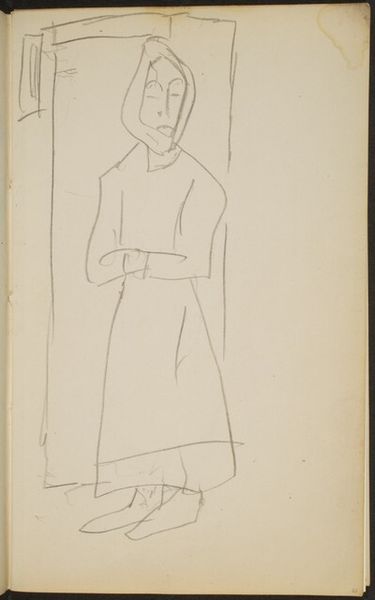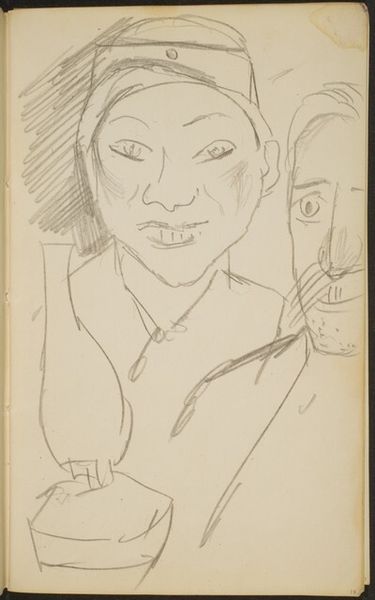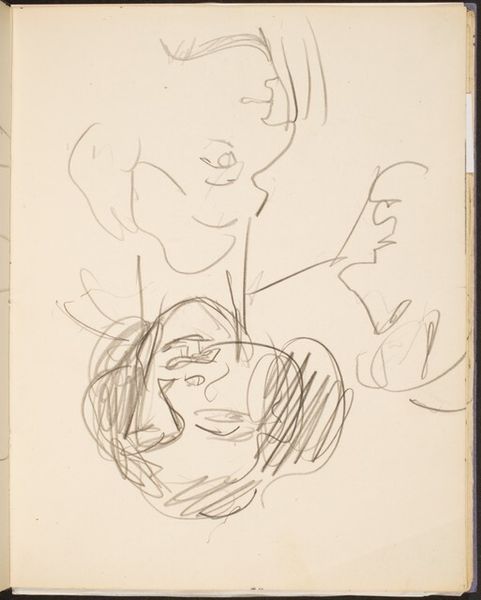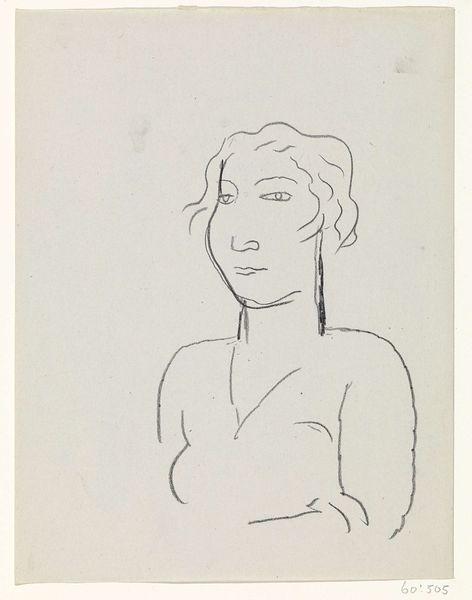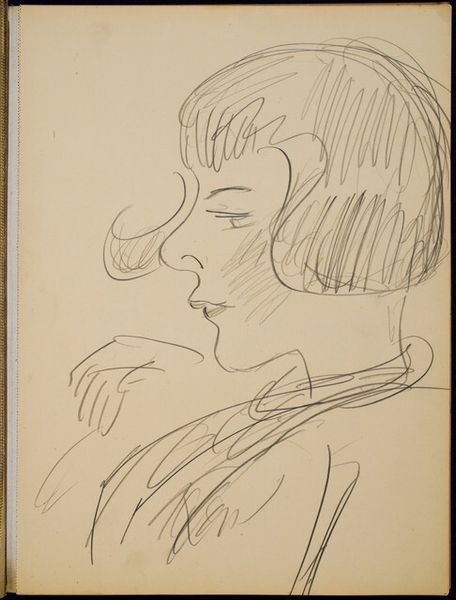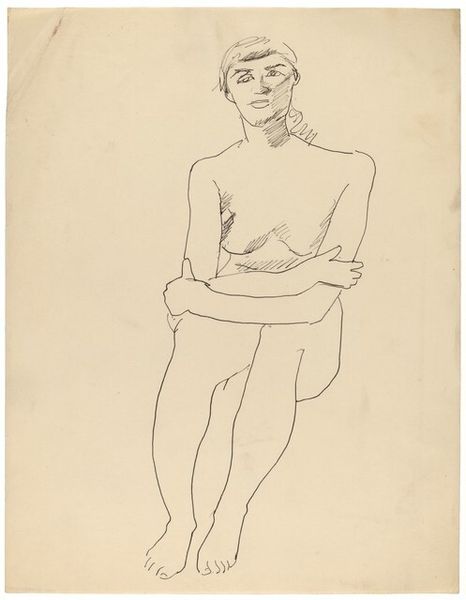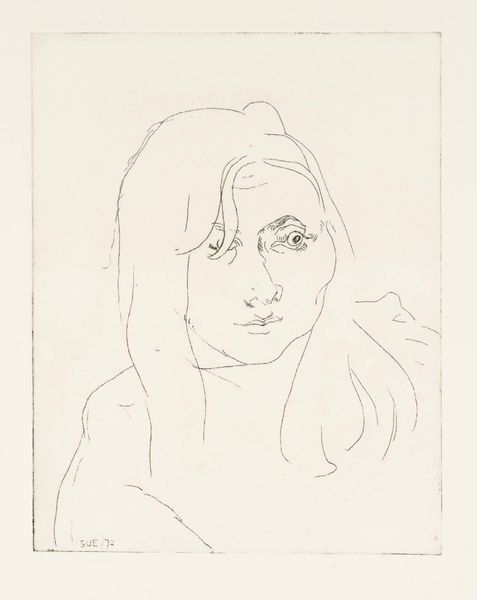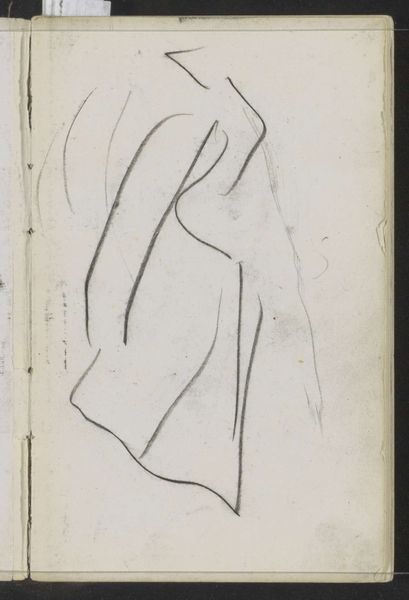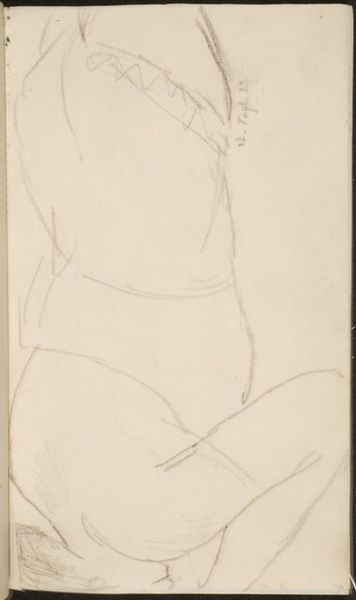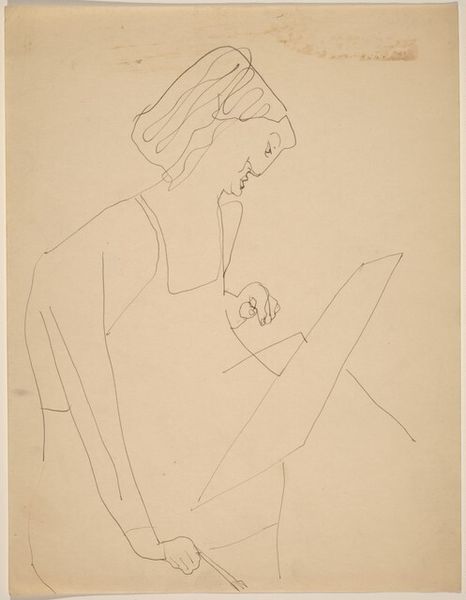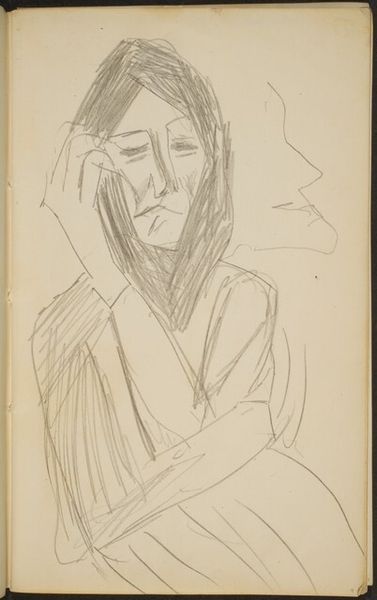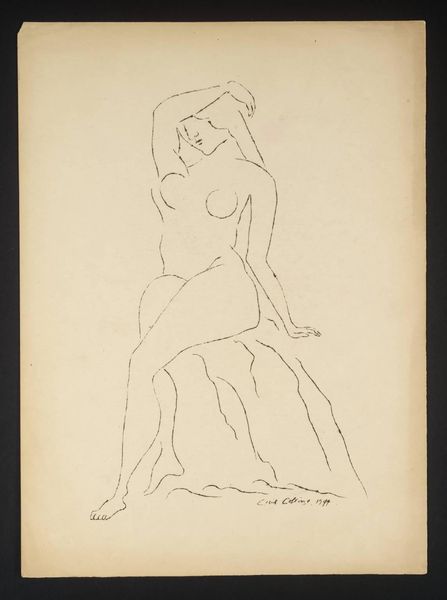![flüchtige Halbfigur mit Kopftuch (Woman with a Headscarf) [p. 7] by Max Beckmann](/_next/image?url=https%3A%2F%2Fd2w8kbdekdi1gv.cloudfront.net%2FeyJidWNrZXQiOiAiYXJ0ZXJhLWltYWdlcy1idWNrZXQiLCAia2V5IjogImFydHdvcmtzL2MyMjRjYzMwLWUzNDktNDI3OC1hMGEzLWQ5NTQ0NmU2Zjg1OC9jMjI0Y2MzMC1lMzQ5LTQyNzgtYTBhMy1kOTU0NDZlNmY4NThfZnVsbC5qcGciLCAiZWRpdHMiOiB7InJlc2l6ZSI6IHsid2lkdGgiOiAxOTIwLCAiaGVpZ2h0IjogMTkyMCwgImZpdCI6ICJpbnNpZGUifX19&w=828&q=75)
flüchtige Halbfigur mit Kopftuch (Woman with a Headscarf) [p. 7]
0:00
0:00
drawing, pencil
#
portrait
#
drawing
#
german-expressionism
#
figuration
#
pencil
Dimensions: page size: 19.5 x 12 cm (7 11/16 x 4 3/4 in.)
Copyright: National Gallery of Art: CC0 1.0
Curator: Before us is "flüchtige Halbfigur mit Kopftuch (Woman with a Headscarf) [p. 7]", a compelling sketch attributed to Max Beckmann. It’s rendered with pencil. Editor: There's a haunting quality, isn't there? The lines are so delicate, yet the subject's gaze feels intense. The quick, light sketch creates such a mysterious feeling, it suggests fragility and even transience. Curator: The "Woman with a Headscarf" certainly evokes a powerful sense of humanity, reflecting the artist’s commitment to figuration at a period that prized pure abstraction. Beckmann's portraits often challenged bourgeois society, showing them everyday subjects rather than idolizing them. Editor: That headscarf—a seemingly simple element—carries a lot of symbolic weight. Headscarves have different meanings in different cultures; it will denote devotion, piety, protection, and anonymity, which gives us much to think about when contemplating the drawing's emotional undertones. It makes her simultaneously visible and shielded. Curator: Exactly! Beckmann situated his works within the broader context of post-World War I German Expressionism and New Objectivity. Beckmann used the headscarf motif in portraits that challenged established norms and societal anxieties around the role of women. His unflinching focus gave women a distinctive cultural role after wartime displacement. Editor: I wonder if the fleeting nature of the sketch mirrors something about the subject’s own life. It evokes a sense of passing encounters and memories which connects it to our modern struggles for a home. Curator: It prompts consideration of the cultural, gendered role imposed on people who, willingly or unwillingly, became refugees within the nation-state. It is through artworks like this that people challenged the very definition of national identity. Editor: And it is fascinating how a mere drawing becomes a mirror reflecting our personal associations and memories connected to such images. It almost seems unfinished, urging the viewer to imagine her story further. Curator: Well said. The drawing encapsulates how German Expressionism created works that challenge the viewer. Editor: The visual language of German Expressionism leaves us much to contemplate about modernity.
Comments
No comments
Be the first to comment and join the conversation on the ultimate creative platform.
